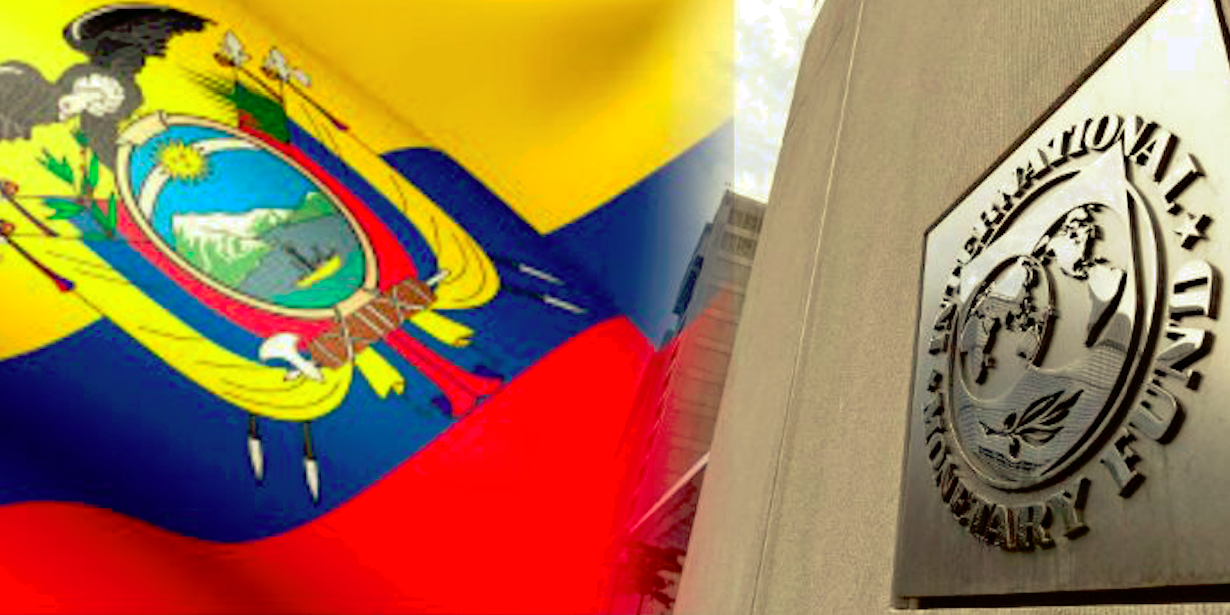RIO DE JANEIRO, BRAZIL – Ecuador will offer a portfolio of almost US$30 billion to attract foreign investment in an “ambitious project” to relaunch the economy until 2025 and reach the goal of 2 million jobs in the current legislature.
The IMF Board is to approve the technical level agreement with Ecuador by the end of September.
Read also: Check out our coverage on Ecuador
“We are going to work on an ambitious project that will bring in close to US$30 billion of foreign investment in the next four years of government,” said Ecuador’s President, Guillermo Lasso, in an interview with Efe on the occasion of his first 100 days in office.

The goal, he added, is to achieve economic growth “above 5% in the last two years” of his Administration and to develop investment projects that generate employment “until the goal of 2 million is met during the 4 years of Government”.
Ecuador has been experiencing since 2019 a lack of liquidity in its public coffers that has been aggravated by the covid-19 pandemic, and its growth outlook of around 3% for this year – a percentage of the lowest in Latin America, according to ECLAC – represents less than half of what was lost in 2020, 7.8%.
AGREEMENT WITH THE IMF
Lasso, who came to power last May, set as his first measure the vaccination of 9 million people in the first 100 days of government, which he achieved, and is now initiating a reactivation that depends on the injection of foreign capital to keep his finances afloat and reactivate hard-hit sectors.
In this sense, these indicators will be “from now on his concern” and he recalled the announcement this Wednesday of a technical agreement with the IMF that will open the door to US$4.5 billion of financing from several multilaterals.
Money that will be used in “social projects such as human development bonds or the fight against child malnutrition”, and that will serve as a “solution path” for the fiscal coffers “for at least 2021 and 2022”.
Asked about the conditions of the agreement, given that a previous one ended up taking thousands of Ecuadorians to the streets in October 2019, in the worst civil revolt in decades, the new president assured that the current one has better conditions.
The previous one “required by 2022 a tax reform equivalent to 2.5% of GDP, approximately US$2.5 billion”, but the current one includes a commitment of “barely 0.7% of GDP” that same year.
“That is to say, there has been a great flexibility in the negotiation and an acceptance on the part of the IMF. Ecuador’s conditions are different today,” the president stated, recalling his goal of doubling oil production to one million barrels per day by 2025, which would require “some $16 billion in private investment.”
A strategy that could awaken sensitivities with the indigenous sector, traditional defender of nature, which the president is trying to bring to a dialogue table, but so far without success.
THE GROWING DEBT
For the president, who faces precarious employment rates (7 out of 10 do not have formal employment) and poverty (34%) that represent a setback of 10 years in the country, the important thing at this time is to “take advantage of natural resources in a sustainable way” to solve social problems.
“We have a large number of Ecuadorians who demand the help of the State to get out of that poverty zone. That is my goal and that is my concern! What we have to do is not what Guillermo Lasso wants, nor an indigenous or labor leader, it is what is convenient for Ecuador,” he stressed.
Ecuador obtained last year around US$7 billion in comfortable loans from multilaterals to plug the fiscal hole, but will continue to depend on that aid this and next year.
An aid that, according to Lasso, will only end when the country has a “fiscal surplus”, which he projects for 2025, because “not taking debt when you have a deficit, or wanting to break the deficit overnight, is to run the risk of a collapse in the economy”.
“I received the government with a structural deficit close to 5 points of GDP, US$5 billion. By 2022 we are proposing a deficit of US$2.8 billion and, over four years, a surplus that will allow future governments to reduce the debt”, he assured.
However, the president is not considering issuing debt in the markets this year, although “yes, next year”, perhaps when his country will be in better conditions.
TAXES
Torn between the impossibility of reducing taxes to encourage consumption, and not raising them to avoid social conflict, he will appeal to the richest to finance the costs of the pandemic.
“It is necessary to rationalize tax management and the objective is that the cost of the pandemic falls on those who have more in Ecuador, that is to say, taxes focused on only 4% of the population”, he said without offering details about a bill that he will present to the Assembly very soon.
He also insisted on strengthening public finances “being much more efficient in the fight against corruption” and “the administration of resources”, because Ecuador has been a country “very badly administered in the last fourteen years, where demagogy and populism have prevailed, not to mention corruption and waste”.
He recognizes that, although there are “problems of lack of liquidity in the fiscal field, with high indebtedness”, Ecuador “is a solvent country” thanks to its resources and potential. The word of a former banker turned president.

